"I've Been Cooking on a Big Green Egg for Over 15 Years — These Are My 5 Golden Rules Everyone Who Owns a Ceramic Grill Should Know"
Chef Ross Geach trained with Rick Stein, and is an expert on outdoor cooking with a Big Green Egg — these are his secrets for getting the most from this type of grill
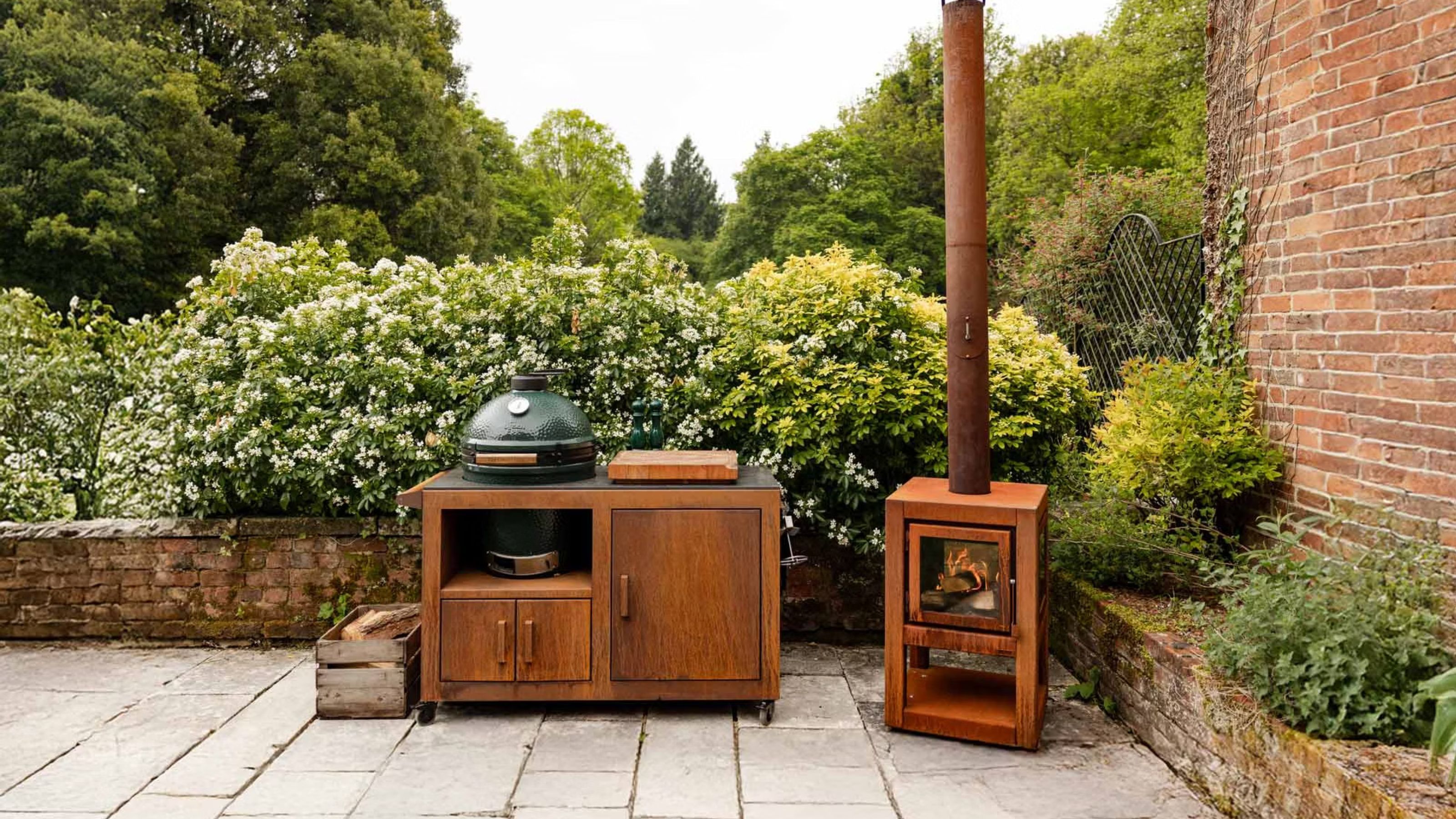

If you're not already familiar with the Big Green Egg, then where have you been? It's probably the most lusted-after, luxury BBQ option for your garden, but given you've got this far, chances are you already might be keen on getting your hands on one, or have a ceramic grill of some kind, but want to get the best from it. That steak getting past medium a little too quickly for your liking? Not sure how to control the temperature like you do a conventional BBQ?
It's true, this outdoor grill idea can be a little outside your comfort zone until you get used to it, but for head chef Ross Geach from Padstow Kitchen Garden, who has been cooking on this type of grill for over a decade, and has some pretty impressive accolades under his built, it now comes as second nature.
Whatever it may be, learning to cook on Big Green Egg successfully will set you up for the best al fresco dining experience, and of course, in return, you'll get the most delicious spread. But what exactly needs to be done to accomplish just that? Well, head chef Ross has given us the need-to-know tips on what you need to do to cook successfully on a Big Green Egg.
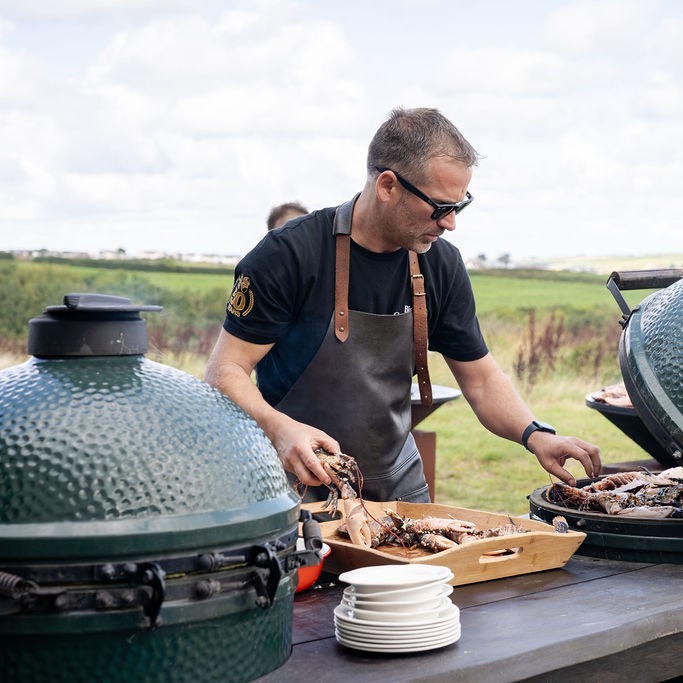
Former Stein’s head chef Ross Geach is the owner and head grower at Padstow Kitchen Garden, supplying seasonal vegetables to top restaurants across Cornwall and beyond. A seventh-generation farmer, Ross turned a side project into a thriving business — harvesting in the morning and delivering produce to local chefs by lunchtime. He has contributed to The Telegraph’s gardening section, appeared regularly on BBC Radio Cornwall’s Gardenline, and featured on BBC One’s Countryfile. To stay connected to the kitchen, Ross hosts pop-up feast nights, BBQ workshops, and live Big Green Egg demonstrations — always using ingredients grown or reared on his family farm. In 2025, he became the UK’s first Big Green Egg Champion, a role that’s already taken him to Atlanta’s Eggtoberfest, celebrating the brand’s 50th anniversary with fire-cooked food from around the world. New this year, guests can now stay on the family farm in luxury shepherd’s huts, immersing themselves in the sustainable ethos at the heart of Padstow Kitchen Garden.
1. Use Natural Fuels
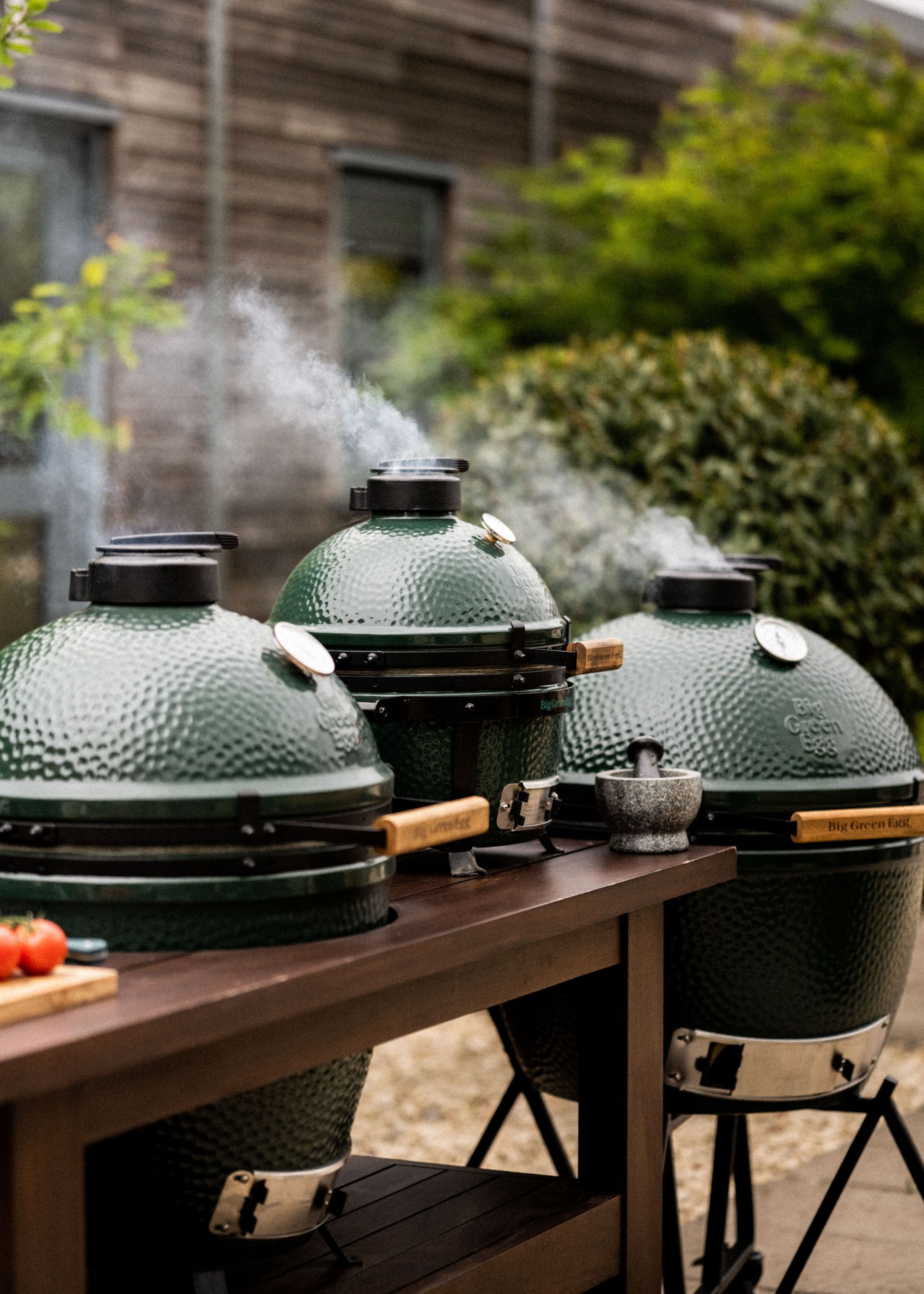
Are you ready to sizzle things up in your outdoor kitchen? The first thing to look out for if you want to cook on a Big Green Egg successfully is using natural and high-quality materials.
"Always choose 100% natural firelighters (like compressed wood wool) and restaurant-grade lumpwood charcoal," says Ross. "Avoid anything synthetic, chemical-soaked, or briquette-based." They're not hard to get hold of, either. You can find compressed wood wool firelighters on Amazon, for example.
So, why exactly does this matter? Well, Ross tells me: "The Big Green Egg is made from porous ceramic, which means it can absorb chemical smells or residue from lower-quality fuel or firelighters," he explains. "This can taint the flavor of your food, not just during that cook, but in future cooks as well. High-quality charcoal burns cleaner, lasts longer, and imparts a natural, wood-fired taste."
If you're looking for high-grade charcoal, consider Big K Chilla-Grilla Restaurant Grade Charcoal available from Amazon.
The Livingetc newsletters are your inside source for what’s shaping interiors now - and what’s next. Discover trend forecasts, smart style ideas, and curated shopping inspiration that brings design to life. Subscribe today and stay ahead of the curve.
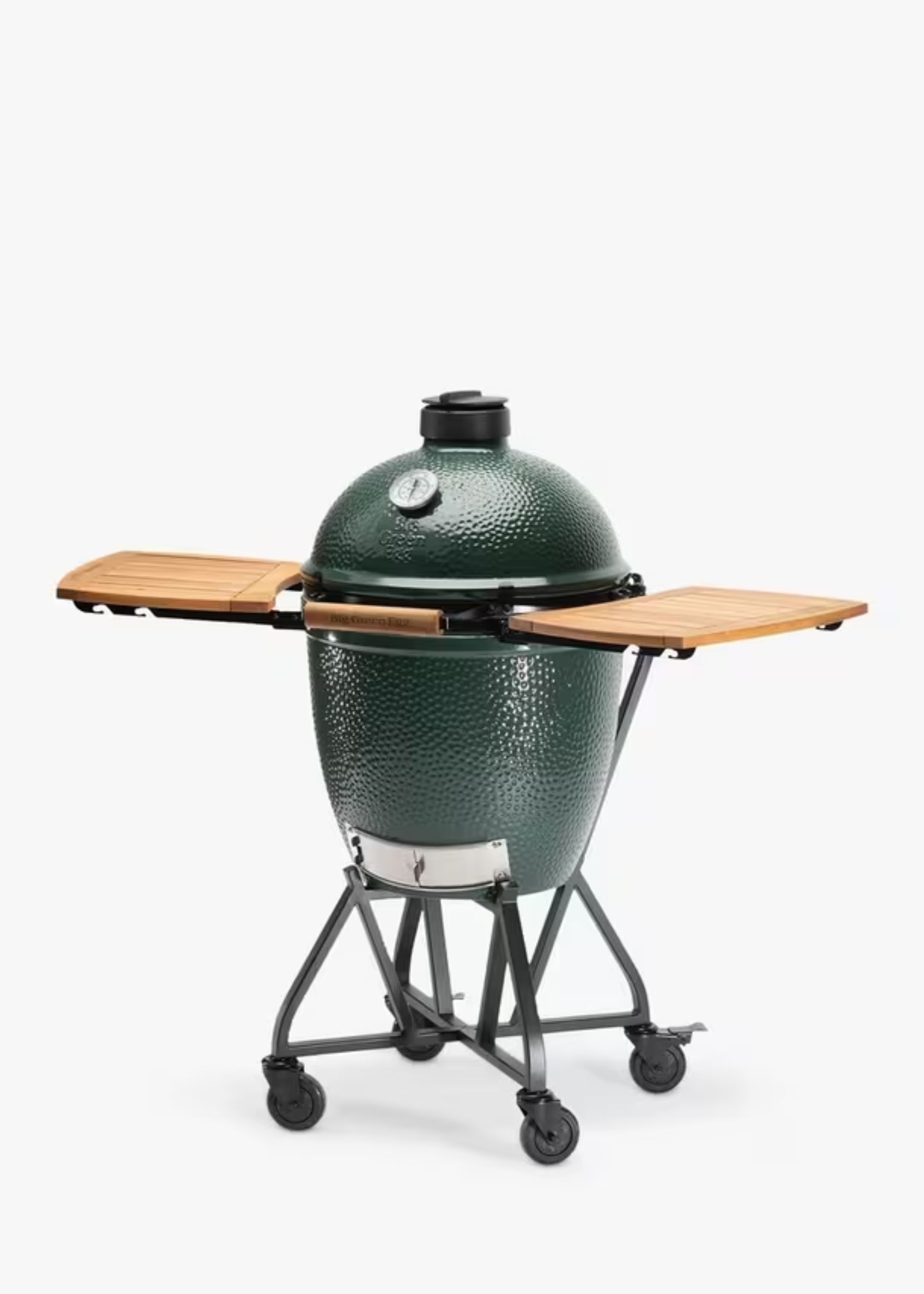
Features:
• Accessories Included: Cover, Nest, Wood Shelves, ConvEGGtor, Stainless Steel Grid, rEGGulator Snuffer Cap, Tel-Tru Thermometer
• Castor Height: 15.0cm
• Castor or Foot Type: Metal Castor
• Cleaning Technology: Manual Cleaning
• Composition: Ceramic, stainless steel, mahogany wood shelves
This large Big Green Egg comes in a bundle with a ConvEGGtor and cover. Stylish and practical, this grill comes with shelves made from acacia wood, making it an ideal place to put your ingredients while you cook up a feast for family and friends.
2. Don’t Overdo the Lighting Process
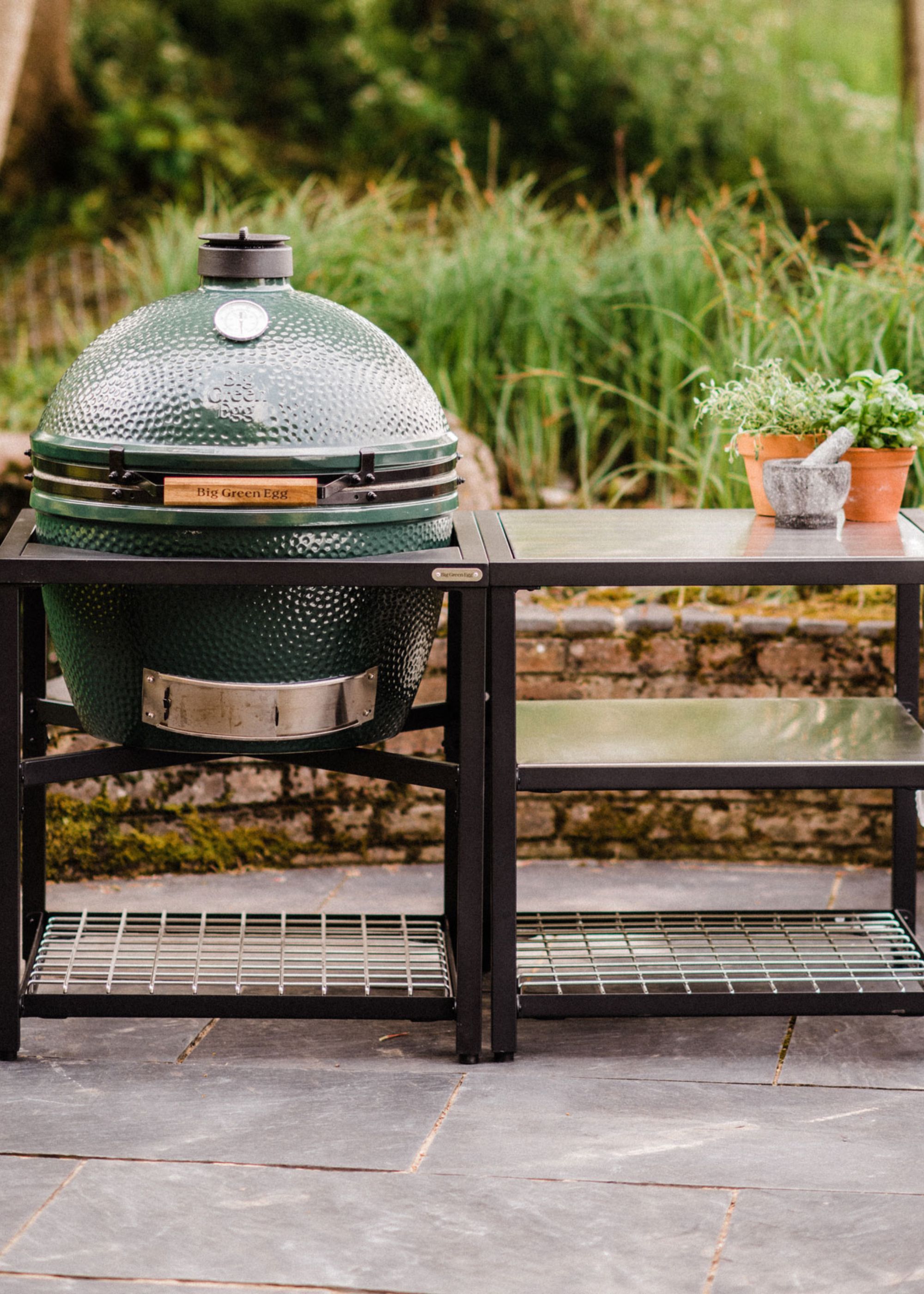
Next, Ross advises keeping a close eye on your outdoor kitchen appliance and grill when lighting it up. He notes: "When lighting the Egg, less is more. There’s no need to use multiple firelighters or wait until the charcoal goes white (as you would with a standard BBQ)."
How to do it properly, according to head chef Ross :
Step 1: Ross says you should first "Place one natural firelighter in the center of the charcoal."
Step 2: Next up, "Open the bottom vent fully and leave the lid open for 10–15 minutes to establish a clean burn."
Step 3: After that, "close the lid, keeping the top vent fully open to allow airflow and heat build-up for another 10–15 minutes."
Step 4: "Once the fire is well established, adjust your vents to reach your desired cooking temperature," adds Ross.
Why this works:
According to Ross, "This controlled start avoids overheating and allows the ceramic to come up to temperature gradually, protecting your Egg and giving you better control later on."
3. Understand How to Control Temperature With Vents
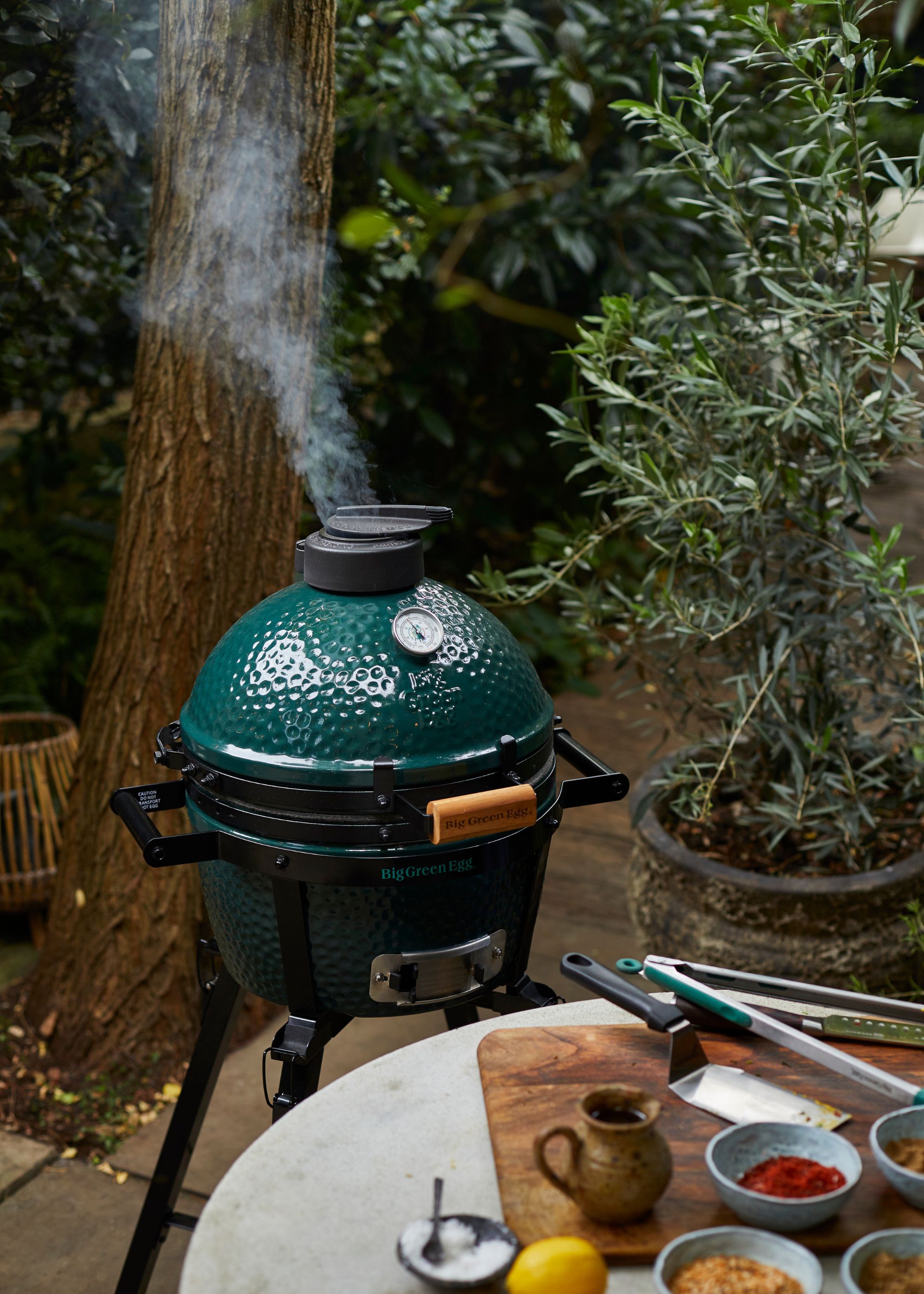
If you're grilling in your modern garden, it's essential to ensure that your grill has sufficient space around it and that it can breathe (and cook) with ease.
The key to this is also knowing how to control the temperature of your Big Green Egg through ventilation. Ross tells me: "The bottom (draft door) and top vents work in unison. The more airflow you allow in, the hotter your Egg gets."
So, how can this be done?
Low and Slow: Ensure both vents are slightly cracked open (e.g., 1–2mm)
Medium Heat (baking, roasting): The bottom vent should be about 1/4 open, and the daisy wheel should be partially open, according to Ross.
High Heat (searing, pizza): For this, "both vents should mostly be open— but be cautious," he says.
"Avoid wide open vents unless you’re very confident and aiming for high-heat cooking like Neapolitan pizza," explains Ross. "Letting it 'rage' too hot can be difficult to bring back down and may crack accessories like the convEGGtor if not handled correctly."
4. Use a Moderate Temperature Range for Most Cooks
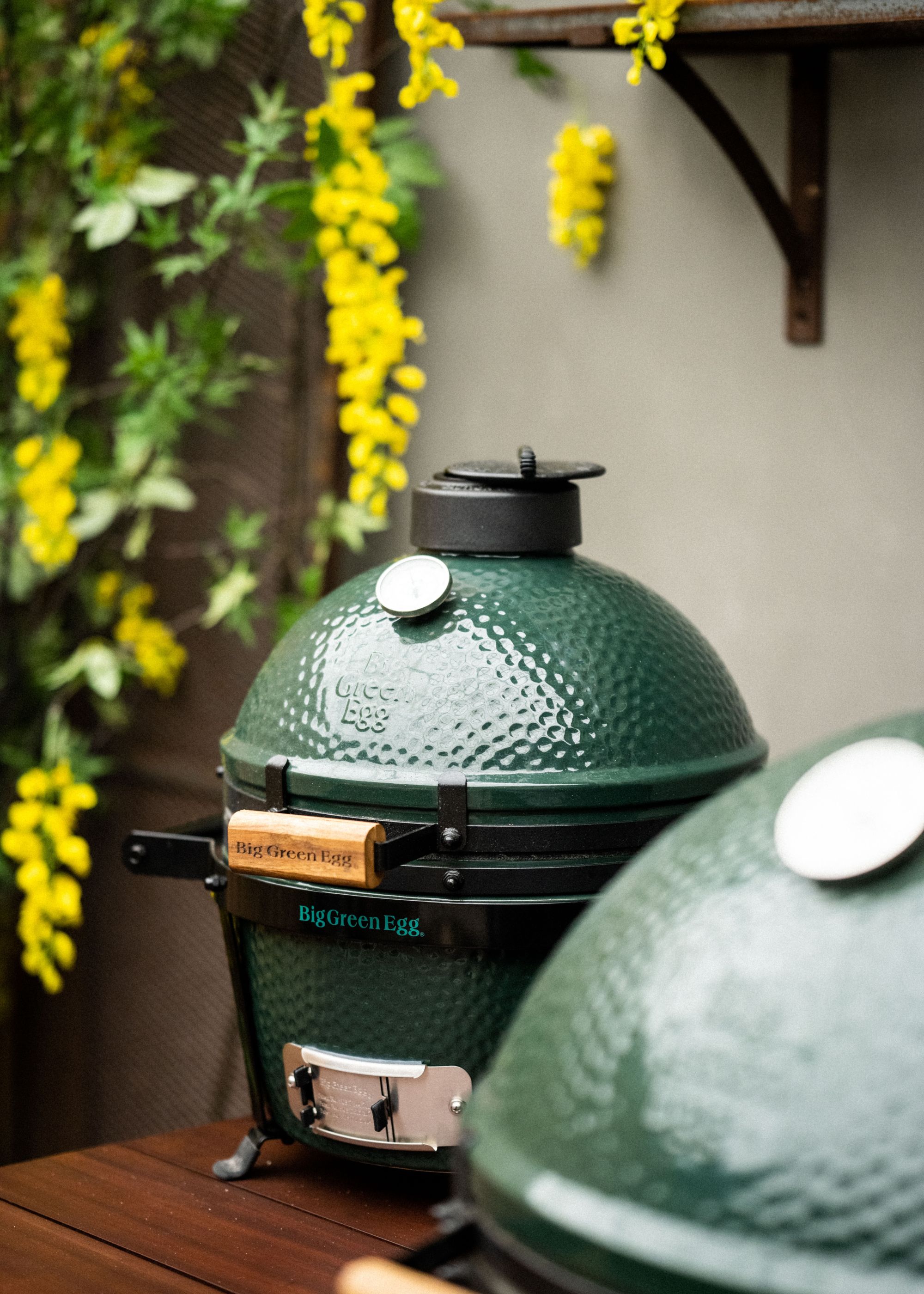
There are a few outdoor kitchen mistakes you'll want to avoid, and that includes cooking your delicious meal at the wrong temperature.
"For general barbecuing (roasts, spatchcock chicken, skewers, veggies, fish, etc.), a range of 190–240°C is ideal," explains Ross. "This range gives you great versatility — it’s hot enough to get crispy skin and caramelization, but not so fierce that you risk burning or drying things out. It’s also easy to maintain and gives you more forgiveness with timing."
Once you've cooked up a cook meal, set your feast aside on the Falcon Enamelware X Big Green Egg Oven To Table Tray from Big Green Egg. Or opt for this GOURMEO BBQ Grill Basket Set of 2 from Amazon.
5. Go Low and Slow for Pulled Pork and Brisket
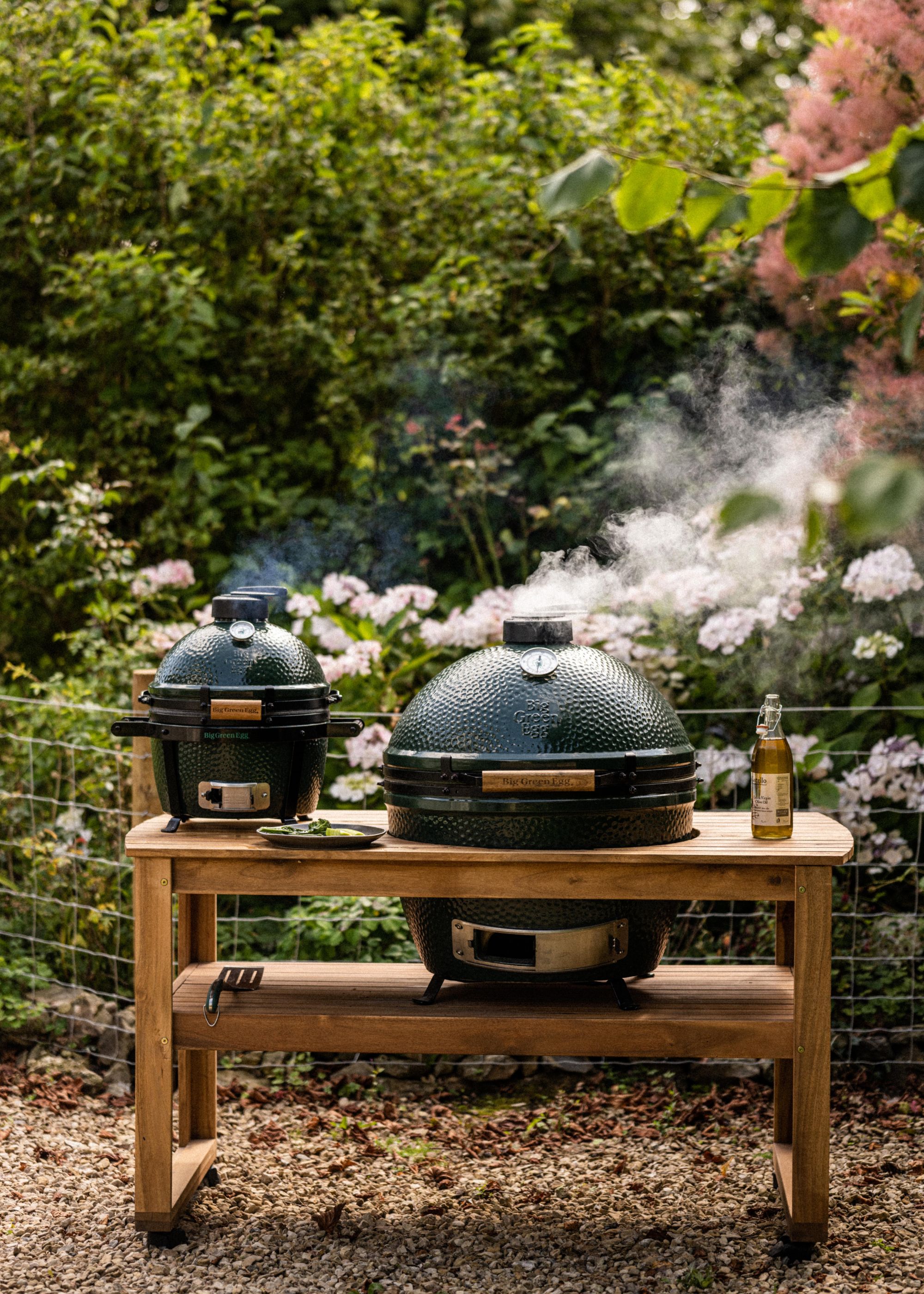
"For large cuts like pork shoulder or brisket, aim for 110–120°C and use the convEGGtor for indirect heat," says Ross. "I’ve successfully cooked four pork shoulders at 110–120°C for over 12 hours, with steady temperature throughout."
As a pro tip, Ross says it's best to use a digital thermometer with dual probes (such as the EGG Genius or Meater like the MEATER Plus Smart Meat Thermometer from Currys) "to monitor both the dome temperature and the internal meat temperature. And don’t open the lid too often — trust the Egg to do its job," he adds.
Chefs Favorites
It's time to see what head chef Ross says is the best cooking accessory to use with a Big Green Egg in your modern kitchen or outdoor living space?
"After 15+ years of cooking on the Big Green Egg, I’ve had the chance to test just about every accessory out there — often before they even hit the shelves," he tells me.
He continues: "Here are two of my absolute favorites that I use time and time again, along with some tips for getting the most out of them."
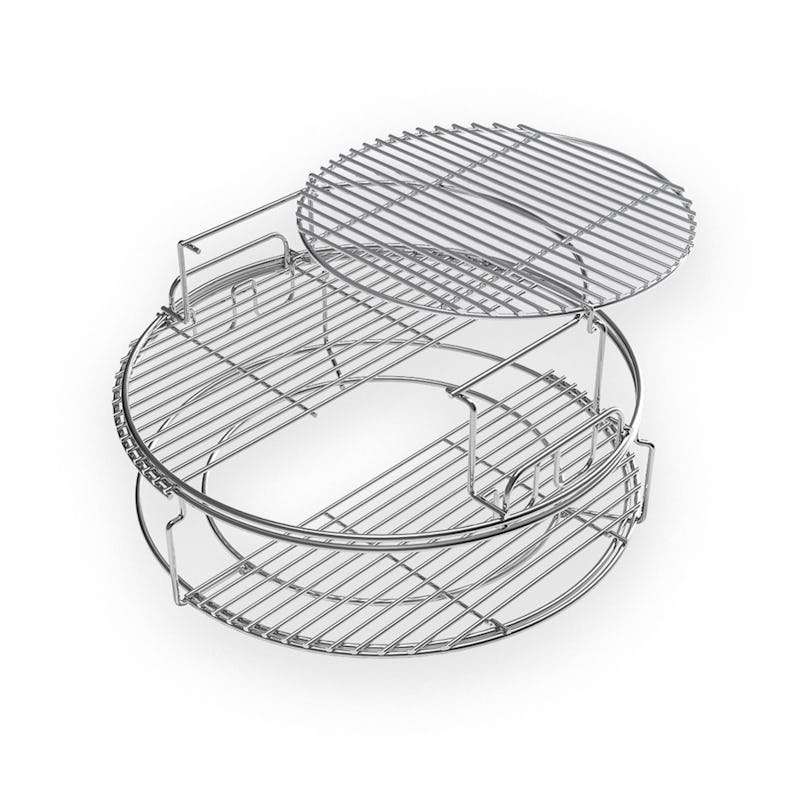
"The most versatile accessory for levelling up your Egg cooking. The EGGspander transforms your Egg into a multi-layered, multi-zone cooking machine," says Ross. "Whether you’re doing a low and slow cook or a fast sear, it gives you total flexibility."
Why Ross loves it:
• Adds extra cooking layers, ideal for larger meals or when cooking multiple items at once
• Let's you raise the food away from the direct heat without needing the convEGGtor
• Makes it much easier to add a drip tray or manage airflow around the food
• Gives you the ability to combine different surfaces — "Think cast iron on one side, stainless on the other," says Ross.
Pro tip: "I often cook with one side raised and indirect, and the other low and direct — giving me full control and the ability to shift foods between zones depending on what they need," adds Ross.

"Flavor, theater, and unbeatable texture — all in one spin," says Ross. "When the rotisserie first came to the UK, I had the privilege of testing it with the BGE team. We put it through its paces — writing recipes, testing ingredients, and refining techniques. It’s become one of my go-to accessories."
Why Ross loves it:
• Adds incredible flavor and texture thanks to self-basting rotation
• Creates visual theater — brilliant for entertaining
• Surprisingly versatile — "I’ve done everything from whole sea bass to joints of pork," Ross tells me.
If you're a first timer, Ross says you should start with a whole chicken. "It’s forgiving and lets you get the hang of the rotisserie setup. I recommend keeping the vents fairly closed at the start to maintain a gentle, even cook," he explains. "Then crank up the temperature near the end to crisp the skin beautifully without drying the meat out."
"These two tools completely change the way you use your Egg — adding control, variety, and an extra layer of professionalism," notes Ross. "Whether you’re a seasoned BBQer or just getting started, they’re the kind of kit you’ll never want to cook without once you’ve used them."
FAQs
What to Avoid When Cooking on a Big Green Egg
When cooking it up on a Big Green Egg, there are a few things you'll want to avoid, according to chef Ross.
1. Using poor-quality fuel:
"Only use 100% natural firelighters and top-quality lumpwood charcoal," says Ross. "The Egg’s ceramic is porous, so anything chemical (like lighter fluid or instant-light briquettes) can taint the flavor of your food — not just during that cook, but future ones too."
2. Letting the Egg get too hot for low and slow cooks:
If you’re aiming for a low and slow cook (around 110–120°C), Ross says it's best to avoid opening the vents too far. "Once the Egg gets too hot, it’s tricky to bring the temperature back down — the ceramic holds onto heat very well," he notes.
3. Opening the lid too often:
"Every time you open the lid, you release heat and airflow, which disrupts your cook," explains Ross. "Trust the Egg — it’s designed to hold temperature and moisture without needing constant checks."
4. Not burping the Egg:
Lastly, Ross says to "always ‘burp’ the Egg before opening the lid, especially at higher temperatures. This means cracking the lid open slightly for a second or two to let the heat escape slowly before lifting fully. It prevents any flare-up or heat rush that can happen if you open it too fast."
Well, there you have it. Now that you know how to cook on a Big Green Egg successfully, ensure you know the ins and outs of how to clean a grill, the right way.

Faiza is the Renovation Editor at Livingetc. She previously worked for The Independent as a News Feature Writer, where she crafted lifestyle, entertainment, and news stories. She also worked as an Audience Editor for the newspaper for almost two years. Thriving in the busy newsroom, Faiza also spent her time crafting stories for Sky News as an SEO reporter, where she produced stories based on trending topics. Lifestyle and interior design have been areas of interest for her for some time, and as she advances in this field, she will continue to refine her skills in all aspects of design. Faiza has a background in SEO, social media, and reporting. Her passion for writing goes beyond her work as she loves all things poetry and creative writing.